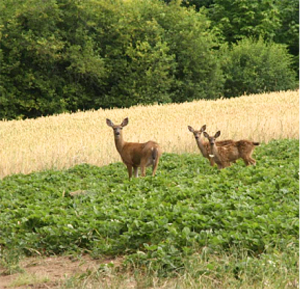Produce Safety Rule

What is the Produce Safety Rule (PSR)?
The Produce Safety rule establishes, for the first time, science-based minimum standards for the safe growing, harvesting, packing, and holding of fruits and vegetables grown for human consumption. The final rule went into effect January 26, 2016.
The rule is divided into several parts, including standards for:
1. Agricultural Water: Water that is intended to or likely to contact produce or food-contact surfaces must be safe and of adequate sanitary quality, with inspection and periodic testing requirements. (NEW: Final Rule on Pre-Harvest Agricultural Water)
2. Biological Soil Amendments of Animal Origin (BSAAO): The rule specifies types of treatment, methods of application, and time intervals between application of certain soil amendments — including raw and treated manure – and crop harvest.
3. Health and Hygiene: The rule requires that farm personnel must follow hygienic practices- including hand washing, avoiding working when sick, and maintaining personal cleanliness.
4. Domesticated & Wild Animals : The rule requires certain measures to ensure animals under the farms control do not become sources of contamination. Additionally, farmers must monitor for wildlife intrusion and not harvest produce visibly contaminated with animal feces. (New: Adjacent and Nearby Land Use and its Impact on Produce Safety)
5. Equipment, Tools, & Buildings: The rule sets requirements for equipment and tools that come into contact with produce, as well as for buildings and other facilities.
6. Training: The rule requires training for supervisors and farm personnel who handle produce covered by the rule.
7. Records: The rule requires record keeping requirements that document adherence to the standards, including for training, agricultural water, biological soil amendments of animal origin, and sprouts.
8. Sprouts: The rule establishes separate standards for sprout production, including treatment of seed before sprouting and testing of spent irrigation water for pathogens.
For more information on PSR visit the FSMA Final Rule on Produce Safety website.
Additional Resources:
Who/What is covered by the PSR?
• The Produce Safety Rule applies to covered farms doing covered activities on covered produce.
- Covered farms are all farms selling over $25,000 worth of produce averaged over the previous 3 years and adjusted for inflation. (Updated: FSMA Adjusted Cut Offs)
- Covered activities are growing, harvesting, packing, or holding covered produce on a farm.
- Covered produce (any fruit or vegetable, and includes mushrooms, sprouts, peanuts, tree nuts, and herbs) means produce that is subject to these rules: produce that is in its unprocessed state, and is usually consumed raw.
• Follow the Coverage and Exemptions/Exclusion Flowchart to see if your farm is covered or exempt.
Who is exempt?
• A farm who only grows produce that is considered a “rarely consumer raw” commodity.
• A farm who only grows produce that is for personal consumption or produced for consumption on the farm or another farm under the same management
• A farm where some or all their produce that we consider covered may be further processed before it reaches the consumer1. Example are grapes grown only for winemaking
• A farm that (1) has food sales averaging less than $500,000 per year during the previous three years; and (2) farm’s sales to qualified end-users must exceed sales to all others combined during the previous three years are qualified exempt.
• A farm whose average annual dollar value of the produce they sold during the previous 3-year period was less than $25,000 adjusted for inflation.
1Specific documentation and written assurance will be required
2A qualified end-user is either (a) the consumer of the food or (b) a restaurant or retail food establishment that is located in the same state or the same Indian reservation as the farm or not more than 275 miles away.
Additional Resources
• FDA Fact Sheet: "Rarely Consumed Raw" Produce
Qualified Exemption Review Template